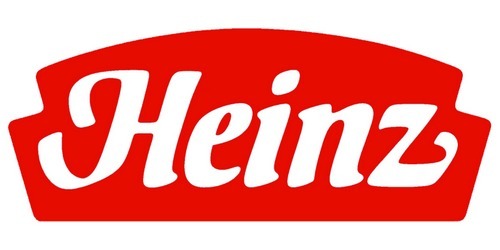The Marketing mix of Heinz analyses the 4Ps of Heinz, which includes the Product, Price, Place, and Promotions. Heinz is an American-origin corporation that is associated with the food processing industry. It was founded in 1869 by its founder, Henry J. Heinz. In the United States, it is ranked first for its core product, Ketchup, and occupies nearly 50% of the market share. In 2013, Heinz was purchased by 3G Capital and Berkshire Hathaway for 23 billion dollars; in 2015, it once again merged with Kraft to become Kraft Heinz Company. This food company is the fifth most prominent in the global market. Some of its competitors in the consumer market are as follows-
- ADM
- Tyson Foods
- ConAgra Foods
- Campbell Soup
- Del Monte Foods
- Nestle Ltd
- Unilever
About Heinz
- Type: Public Company
- Industry: Food processing
- Founded: 1869
- Founder: Henry John Heinz
- Headquarters: United States
- Area served: Worldwide
- Key people: Miguel Patricio (Chairman) and Greg Guidotti (CEO)
- Number of employees: 77,000
Table of Contents
Heinz Product Strategy
Heinz is an international brand that started its product kit with Tomato Ketchup. Later, in 1914, it started manufacturing Salad Cream, and in 1930, it offered its customers baby food and ready-to-serve soups, which became top sellers.
Australia’s entire product line portfolio includes Canned-Baked Beans and Spaghetti made in tomato sauces, ready-to-eat soups, condensed soup, and canned soup. Canada’s product portfolio comprises Ketchup, mustard, tomato juice, vinegar, barbecue sauces, baby food, beans, canned pasta, soups, gravies, and sauces. In India, Heinz Ketchup is available in two variants: Heinz Tomato Chilli Sauce and Heinz Tomato Ketchup.
The company has acquired Glaxo India, and now its product kit in India also includes Sampriti Ghee, Glucon C, Glucon D, and Complan. In Indonesia, it manufactures syrups, Juices, condiments, and sauces; in the United Kingdom, it markets Heinz Baked Beans and baby milk. Heinz products are available in convenience stores in bottles and sachets of various sizes to suit a diverse range of individual consumer needs.
The product mix of Heinz is vast and diverse from other brands, featuring over 600 different products.
The new Product Mix of Heinz in 2023 is as follows (Source).
- Heinz Ketchup: The iconic product is known worldwide and considered the cornerstone of the brand.
- Mayonnaise: Heinz offers a variety of mayonnaise products.
- Sauces are a broad array of sauces catering to different culinary needs and tastes.
- Soups: Heinz produces various types of soups.
- Beans: Beans are another significant category in their product range.
- Snacks: The company also has a line of snack products.
Heinz’s offerings are available in various flavors, sizes, and price points, catering to consumer preferences. Additionally, Heinz has embraced private label products, allowing them to extend their reach through the labels of other retailers and food companies.
Heinz Place Strategy
Heinz is one of the most established brands in the food and beverage industry and has its presence spread over several countries. Its food products are manufactured in several facilities located on six continents. These end products are marketed in nearly two hundred countries spread all over the globe. Heinz’s headquarters is in Pittsburgh, Pennsylvania, in the United States. Heinz has factories in South Carolina, Oregon, Idaho, Florida, and California in the United States, Mill Park and Echuca in Australia, Ontario and Montreal in Canada, Indonesia, Netherlands, India, China, and the United Kingdom. Heinz has vital research and development facilities in several places.
It has a widespread distribution network that helps in quick and efficient workings. Its channel includes services of manufacturing plants and, from there, wholesalers and then retailers. Consumers can easily purchase Heinz products from local markets, grocery stores, convenience stores, discount stores, hypermarkets, and supermarkets.
The following key points can characterize Heinz’s place strategy:
- Unified Global Strategy: For the first time in its history, Heinz has implemented the same creative execution across all markets worldwide. This unified approach indicates a shift towards a more cohesive global branding strategy, which streamlines their advertising efforts.
- Cultural Adaptation and Localized Approach: Historically, Heinz has adapted its marketing and product distribution to local markets, ensuring that each market’s unique cultural preferences are considered. This approach has been essential for aligning with diverse consumer needs globally.
- Leveraging Similarities Across Markets: Heinz recognized that the similarities across global markets outweigh the differences. This insight led to a strategic shift, enabling the brand to unify its approach while catering to local preferences.
- Timeless Branding for Multi-Generational Appeal: In collaboration with Wieden+Kennedy, Heinz creates timeless branding that resonates across generations. This approach avoids chasing transient trends and aims to establish long-lasting relevance.
- Scalability of Ideas: Ideas originating from any market (like the US or UK) are now integrated into Heinz’s global strategy. This approach allows for rapid scaling and maximization of potential, ensuring that successful concepts are leveraged effectively across all regions.
Heinz Pricing Strategy
Heinz faces tough competition from rival companies; hence, the beverage company has adopted a competitive pricing policy by keeping its price range in brackets similar to its competitors. It has set up prices after evaluating consumer demand and their willingness to pay. Heinz has also taken up a penetration strategy as it wants to increase its market share. The brand has adopted a reasonable pricing policy and assured its customers of a value-based strategy because it offers high-quality products at affordable rates. Consumers are finding these prices within their means and maintaining their brand loyalty.
Heinz employs a multifaceted pricing strategy that can be summarized as follows:
- Competitive Pricing Strategy: Heinz adopts a competitive pricing approach, considering the target consumer demographic and market dynamics. This strategy is crucial in maintaining a balance between affordability and profitability, ensuring that its products are attractively priced compared to competitors in the sauce category like Kissan and Nestle.
- Responsiveness to Economic Conditions and Consumer Habits: The company adjusts its pricing decisions based on economic conditions and consumer habits. This dynamic approach helps Heinz stay relevant and competitive, responding effectively to market changes and consumer preferences.
- Product and Packaging Innovation to Drive Sales: Heinz has innovated in product packaging, such as introducing bottles with an upside-down shape and promoting larger bottle sizes at major retail outlets. Such initiatives are part of its strategy to increase sales and market share, particularly in categories like Ketchup, where it continues to perform strongly.
- Broad Consumer Appeal: Heinz’s pricing strategy is designed to attract a wide range of consumers, from thrifty shoppers to culinary enthusiasts. This broad appeal is crucial in maintaining the brand’s widespread popularity and ensuring a steady consumer base.
- Promotions and Discounts to Attract and Retain Customers: Heinz frequently uses discounts and promotions to entice new customers and maintain the loyalty of existing ones. These marketing tactics are an integral part of their pricing strategy, helping to boost sales and reinforce brand loyalty.
Heinz’s pricing strategy is a calculated blend of competitive pricing, market responsiveness, product innovation, broad consumer appeal, marketing campaigns, and promotional tactics to sustain its market position and drive growth.
Promotions in the Marketing Mix Of Heinz:
Heinz has adopted several marketing strategies and policies to create positive brand awareness amongst consumers. It has conducted thorough research, and its promotional campaign is focused on reaching a new customer base by adopting an aggressive strategy. Heinz launched several sampling campaigns to make consumers aware of its different products.
It has used every possible medium, like electronic, social, and print, to its advantage. Its commercials are telecast via different television channels and are aired on several radio stations. Hoardings are placed in strategic and crowded areas to gain maximum exposure. Ads are displayed through posters, pamphlets, magazines, and newspapers. Heinz has intense social exposure through social media platforms like Facebook, YouTube, and Twitter.
Some Recent Video ads and Print ads of Heinz are:
https://youtu.be/keOaQm6RpBg
Considering its diverse product range, how does Heinz maintain its market leadership?
In the rapidly evolving food processing industry, Heinz’s strategic approach to digital marketing has been pivotal in maintaining its leadership. A recent study by eMarketer in 2023 highlighted that food brands leveraging personalized online advertising see up to a 25% increase in consumer engagement. This trend is evident in Heinz’s latest digital campaigns that utilize data-driven insights to tailor messaging, increasing customer connection and loyalty.
Another critical component of Heinz’s success is its ability to innovate while staying aligned with consumer trends. For instance, in the 2023 Food Industry report by Statista, it was noted that 65% of consumers now prefer products with sustainable packaging. Heinz has responded by introducing recyclable and eco-friendly packaging across many of its product lines, further enhancing its commitment to sustainability and addressing growing consumer demand. These initiatives not only contribute to Heinz’s market share but also reinforce its brand image as a forward-thinking and responsible company.
Liked this post? Check out the complete series on Marketing Mix

